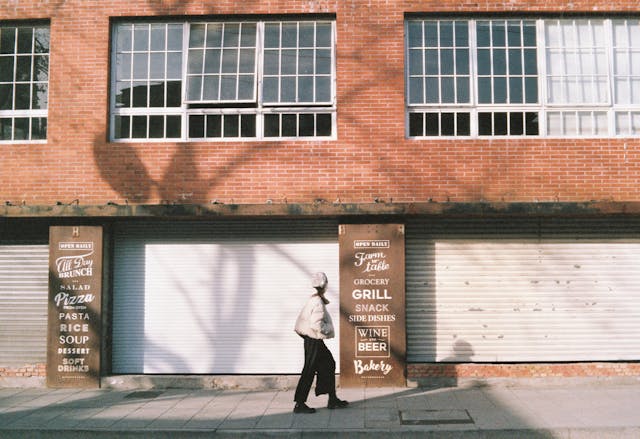Seattle faces Kroger Fred Meyer closures, sparking debate on wages, policies, and the city’s changing retail landscape.
The Kroger Fred Meyer Seattle closures refer to multiple store shutdowns across Seattle following rising operational costs, new city wage mandates, and profit challenges that made continued operations unsustainable for the grocery giant.
It started as a whisper; one of those uncertain, almost unbelievable bits of news that pass from one employee to another. “Another Fred Meyer is closing,” someone muttered. Then silence, a moment of disbelief, followed by the quiet acceptance that’s becoming all too familiar in Seattle.
This isn’t just about a grocery store shutting down. It’s about the slow unraveling of community spaces that once defined the rhythm of daily life. Where you knew the cashier’s name, where kids ran to the toy aisle, and where someone always held the door open for you.
Now, those spaces are disappearing. And behind those closed doors is a deeper story; one about money, policy, and the invisible tug-of-war between progress and survival.
Let’s unpack why Kroger and Fred Meyer are closing stores in Seattle, and what these closures reveal about the city itself.
Article Breakdown
Why Are Kroger and Fred Meyer Closing in Seattle?
At first, the corporate explanation sounded predictable: rising costs. But as always, the truth is layered.
The closures began after Seattle passed new wage mandates requiring large grocery stores to pay workers an additional $4 per hour as “hazard pay” during the pandemic. The law was intended to protect essential workers. But for chains already operating on razor-thin margins, that change tipped the scale.
Kroger, which owns both Fred Meyer and QFC, called the requirement “unsustainable.” Within weeks, it announced multiple store closures across the city.
On paper, it looked like a financial decision. In reality, it reflected a much deeper tension between corporate survival and civic responsibility.
The Wage Mandate Ripple Effect
Let’s put this into perspective.
Grocery chains typically operate on 1–2% profit margins. That means for every $100 in sales, they earn just $1–2 in profit. When labor costs jump suddenly; as they did under the hazard pay rule; those margins vanish.
Some called Kroger’s move “corporate retaliation.” Others saw it as simple arithmetic.
For many store managers, it wasn’t about ideology; it was about math. Once you factor in higher wages, theft, inflation, and rent, the economics crumble fast.
One former Seattle store manager explained it this way:
“The problem wasn’t paying people more. The problem was that nothing else adjusted to make that possible.”
The closures weren’t personal; but for the workers, customers, and communities, they felt that way.
Seattle’s Changing Retail Landscape
Walk through Seattle today, and you’ll see a pattern; the quiet exodus of long-time retailers. Some call it “economic cleansing.” Others call it “evolution.”
Neighborhoods that once hosted bustling Fred Meyer and QFC stores now rely on boutique groceries, farmers markets, or delivery apps. Downtown corridors, once alive with fluorescent light and checkout lines, now echo with “For Lease” signs.
Seattle’s population hasn’t shrunk, but how it shops has changed.
People order groceries online. They schedule curbside pickups. They live smaller, more digital lives.
Fred Meyer; once the all-in-one giant; found itself stranded between two worlds: Too big to adapt fast, too traditional to compete digitally.
It’s the same story we’ve seen in cities like Portland, San Francisco, and Los Angeles; but in Seattle, the transformation feels especially personal.
This city once prided itself on community-based commerce. Now, it’s learning to live with the convenience; and isolation; of e-commerce.
The Economics Behind the Closures
Imagine this: A Fred Meyer location makes $500,000 a week in sales. After paying suppliers, rent, and staff, maybe it clears a 2% profit; that’s $10,000.
Add hazard pay, inflation, insurance increases, and theft; now that same store is losing money weekly.
So the decision to close isn’t emotional. It’s mechanical. Wall Street doesn’t reward stability; it rewards growth.
That’s the uncomfortable truth about publicly traded corporations; profit equals survival. Even when that survival means walking away from communities that helped build your brand.
It’s not that Kroger couldn’t afford to keep these stores open. It’s that doing so didn’t make sense to shareholders.
And in modern capitalism, that’s the only math that matters.
Seattle’s Political Divide: Fair Pay vs. Economic Reality
Seattle is a city of ideals; progressive, forward-thinking, and deeply concerned with equity. So when it passed the hazard pay ordinance, it came from a place of moral clarity. Workers were risking their health during the pandemic. They deserved more.
Kroger, however, argued that the law unfairly targeted large chains while smaller local grocers were exempt. They saw it as selective pressure; a symbolic victory that came at the expense of sustainability.
Critics accused the company of corporate bullying. Supporters said it was finally holding big businesses accountable. Both perspectives hold truth.
The closures became a mirror reflecting a deeper social question: Can cities demand fairness without breaking the systems that keep them running?
Seattle’s grocery closures turned into a national talking point; not just about economics, but about what it means to balance compassion and capitalism.
What Happens to the Empty Stores?
The story doesn’t end when the doors lock.
Empty grocery stores leave behind more than vacant square footage. They leave behind ghosts of routine; the cashier who knew your name, the bakery that sold cupcakes for every school event, the space where neighbors crossed paths.
In Ballard, one closed store has become a pop-up marketplace and food co-op experiment. In Capitol Hill, developers are eyeing mixed-use redevelopment: part retail, part residential.
These spaces are being reinvented, but something intangible is lost in translation. The fluorescent hum, the smell of produce mist, the rhythm of everyday life; those are harder to replace.
“It’s not just about where I shop,” said one Seattle resident. “It’s about where I used to belong.”
And that’s what makes these closures feel so heavy; they’re about more than groceries. They’re about identity.
Kroger’s Bigger Game: Seattle as a Symbol
If you zoom out, the Seattle closures start to look strategic.
Kroger isn’t collapsing; it’s restructuring. Nationwide, the company is preparing for a massive merger with Albertsons. That means consolidating operations, cutting losses, and shifting toward digital expansion.
Seattle; with its strict policies, high costs, and competitive market; became a logical place to scale back.
By closing certain stores, Kroger reduces financial drag while investing in automation, delivery logistics, and data-driven grocery models.
Seattle’s losses, in other words, are part of Kroger’s national chessboard.
For the company, it’s optimization. For the city, it’s disconnection.
That’s the paradox of modern business; what looks efficient on paper often feels hollow in person.
Before vs. After the Closures: A Comparative View
| Aspect | Before Closures | After Closures |
|---|---|---|
| Store Count | ~15 major Kroger-owned stores | ~10 remaining (2025 est.) |
| Worker Pay (avg) | $18–$22/hr + benefits | N/A (many laid off or transferred) |
| Customer Access | Broad city coverage | Gaps in North & Central Seattle |
| Operating Costs | Manageable | Up 15–20% due to policy changes |
| Theft Reports | Moderate | Increased citywide post-pandemic |
| Community Impact | Strong neighborhood ties | Fragmented, replaced by delivery services |
A Personal Reflection: The Slow Goodbye
I used to visit the Fred Meyer near Ballard every Sunday. It wasn’t fancy, but it felt grounded; a mix of workers, families, and the occasional musician stopping by after rehearsal.
Now the building’s fenced off. The signs are gone. The automatic doors are locked forever.
What’s strange is how fast something ordinary can disappear; and how deeply it lingers afterward.
These closures aren’t just an economic event. They’re a human one. They mark the fading of a communal rhythm, replaced by the sterile precision of convenience.
Maybe this is progress. Maybe it’s loss. Maybe, like most things in Seattle, it’s both.
FAQ’s
Q1: Why are Kroger and Fred Meyer closing stores in Seattle? Due to rising costs, wage laws, and declining profitability, Kroger determined that certain stores were no longer financially viable.
Q2: How many Fred Meyer or Kroger stores have closed in Seattle? Since 2021, at least four major stores; including both Fred Meyer and QFC locations; have shut down, with more expected to follow.
Q3: Will the closed stores reopen under new management? Some spaces may be leased to smaller grocers or local co-ops, but many remain vacant or under redevelopment.
Q4: Are the closures related to the Kroger-Albertsons merger? Yes, partially. The closures align with Kroger’s nationwide strategy to streamline before the merger.
Q5: What do the closures mean for Seattle shoppers? Fewer full-service options, longer travel times, and a growing reliance on delivery services and smaller retailers.
Key Takings
- The Kroger Fred Meyer Seattle closures were driven by a mix of financial strain, city wage mandates, and shifting consumer behavior.
- Seattle’s hazard pay law highlighted the tension between fair wages and sustainable operations.
- These closures mark a turning point in how urban grocery systems function in high-cost cities.
- Empty stores symbolize more than lost jobs; they represent fading community spaces.
- Kroger’s decisions are part of a larger corporate strategy tied to automation and the Albertsons merger.
- Seattle’s retail story reflects a broader national trend: profit efficiency replacing local intimacy.
- What’s lost isn’t just convenience; it’s the everyday human connection that once made grocery shopping feel like home.
Additional Resources
- Kroger’s Store Closures and Hazard Pay Fallout: A deep dive into the tension between local wage laws and corporate response, exploring the broader policy implications.
- Inside Kroger’s Nationwide Retail Strategy Ahead of the Albertsons Merger: A breakdown of how Kroger’s national restructuring connects to local closures and the future of American grocery retail.



